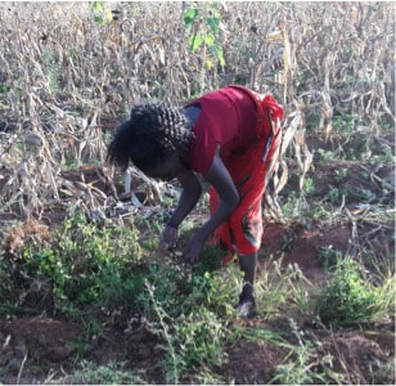Written by CorpsAfrica/Malawi Volunteer Ms. Caroline Luka
Malawi being an agriculture-based country relies on agriculture for its economy, as well as household consumption. Every farming season, community members work from as early as 4:00 am in their fields just so they have bumper yields at the end of the season. The growing season starts in November and goes through April. I was deployed to my site as a CorpsAfrica Volunteer in November 2017 and have had the privilege to be part of this entire experience in my community. Harvesting normally starts in April and goes through June depending on when the crops were planted. It is during this time that “waulesi amaonekera” (the lazy man’s work is revealed). The ones who invested their time, money, and energy on their farms have smirks on their faces as they collect their yields for consumption as well as surplus for sale.
The most common crops grown in my community are maize, soybeans, groundnuts, and sweet potatoes. Most people in my community start harvesting soybeans first in their fields. They bring the harvests to their homes using an ox-cart or carry bags full on their heads and then start threshing. Once the threshing is done, they separate it from the pods and put them in bags. Normally this is not a one-man job. Luckily in my community, we have the youth club members who are willing to provide labor for a little something in return.
After they have put the soybeans in the bags to store them, they then go back to their fields and harvest groundnuts. Since groundnuts are an underground crop, they first must uproot them from the ground. They use hoes to dig up the groundnuts and put them in piles in the fields. Once the digging is complete, they then have to start plucking the groundnuts one by one until they finish the entire field. The plucking takes a couple of days as it takes a lot of time. After completing plucking, they bag the groundnuts and store them for food or for sale. Some sell fresh groundnuts while others wait until they are dry to sell. Selling also differs in terms of shelled and unshelled. Unshelled groundnuts are cheaper than shelled.
Maize is harvested last for those who planted more than one crop. During harvesting of maize, they first pile the maize stalks together and start removing the cobs. Once all the cobs have been removed, they put them in an ox-cart to carry home, or for those with fields near their homes they carry the maize on their heads in sacks. In my community, when the maize is transported home, they put them in a nkhokwe (granary) for storage. The nkhokwe can store the maize for months until the owner is ready to shell and put them in bags.

